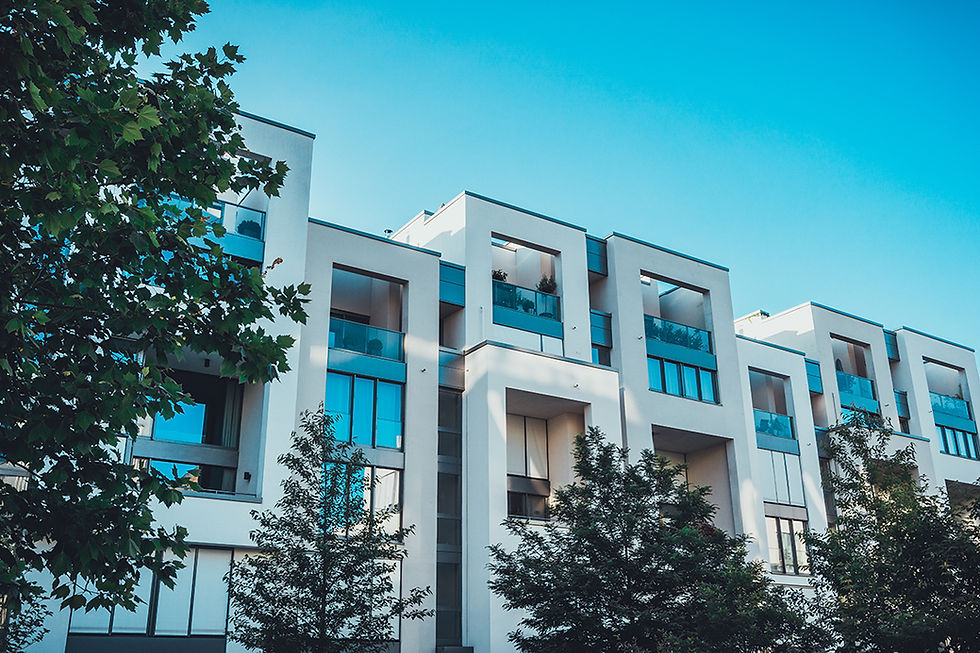Modular Housing Solutions: Learning from European Models to Address Canada's Crisis
- Mario

- Jun 28, 2024
- 3 min read

Statistics Canada's latest projections indicate that Canada's population could reach 63 million by 2073, driven primarily by immigration despite low fertility rates and an aging demographic. By 2073, the number of seniors aged 85 and older could triple, necessitating increased healthcare and social services. Provincially, the population distribution will shift, with eastern provinces like Newfoundland and Labrador seeing a relative decline, while western provinces like Alberta and British Columbia are expected to grow.
Implications for Housing
The anticipated population growth and aging demographic present significant challenges for housing in Canada. The increased number of seniors, especially those aged 85 and older, will require more specialized housing solutions that cater to their healthcare and accessibility needs. This demographic shift will demand a substantial increase in senior-friendly housing, including retirement communities and long-term care facilities.
Moreover, the continued reliance on immigration to drive population growth highlights the need for affordable and adaptable housing solutions to accommodate newcomers. Ensuring that new immigrants have access to affordable housing is crucial for their successful integration into Canadian society. The Canadian government is responding with various initiatives, such as increased funding for affordable housing projects and policies aimed at streamlining zoning laws to facilitate the development of new housing units.
Despite these efforts, the question remains: Is it enough? Current strategies primarily focus on single or low-rise dwellings occupying large plots of land, which may not keep pace with the rapid population growth and urban density challenges. The solutions implemented thus far are often seen as temporary fixes rather than comprehensive solutions to a systemic issue.
The Need for Large-Scale Solutions
The federal and provincial governments’ current strategies may fall short in addressing the long-term housing demand. Band-aid solutions and temporary fixes are insufficient to meet the needs of an expanding population. Instead, Canada should look to the Europe's approach, which includes high-density developments and modern infrastructure. European countries have invested heavily in modular factories capable of producing high volumes of housing, allowing for more efficient and scalable solutions to housing shortages.

In the Netherlands, innovative urban planning has led to high-density housing projects like the MARK development in Utrecht. This project includes three towers with over 1,000 residences, mixing social housing with medium to high rent apartments.
The vertical village design integrates collective spaces around sustainable urban living, with features such as a fleet of 100 shared cars, an urban forest, and urban agriculture on every level. The goal is to create an affordable, social, and inclusive community that redefines high-rise living by bringing natural landscapes into the cityscape.

Reimagining the "American Dream"
The traditional "American Dream" of owning a single-family home is increasingly unattainable for many due to rising housing costs and limited land availability. Initially coined in the mid-20th century, this dream represented home ownership, a car, and a stable job as the pinnacle of success. However, modern urban dwellers face different realities. Urbanization, environmental concerns, and economic shifts mean that single-family homes on large plots of land are not practical for the majority.
Instead, we need to reimagine the dream to fit the 21st century. This new vision emphasizes high-density, sustainable developments that provide ample living space without the sprawl. Unlike the crowded urban landscapes of many Asian cities, Canada has the luxury of available land. Our proposed models, like the Trullii Towers Campus, offer spread-out developments that combine residential buildings with green parks and community spaces, ensuring residents enjoy ample space and do not feel suffocated.
High-density living does not mean compromising on quality of life. Modern infrastructure, green spaces, and community-focused design can create vibrant, inclusive neighborhoods that promote a sense of belonging and well-being. The reimagined dream focuses on sustainability, community, and accessibility, making home ownership a reality for more Canadians.

Trullii Towers: A Vision for Canada
Inspired by successful European models, Trullii Modular proposes the Trullii Towers Campus in Canada. This residential campus will comprise more than 2,000 apartments, with each building accommodating 200 apartments and equipped with underground parking.
The modular construction approach ensures that each building can be move-in ready within a couple of months of completing the foundation. Similar to the Dutch model, the Trullii Campus will mix social housing with medium to high rent apartments, fostering a community-focused environment. This project aims to offer affordable, sustainable, and inclusive housing solutions that can keep pace with Canada's growing and evolving population.
Trullii’s Role in Addressing Housing Challenges
Trullii Modular is committed to supporting these government efforts by providing innovative and scalable housing solutions. Our modular homes are designed to be adaptable, catering to the diverse needs of an evolving population. With a focus on affordability and accessibility, Trullii Modular aims to deliver high-quality housing that meets the demands of both the aging population and new immigrants.
By leveraging modular construction technology, we can rapidly produce housing units that are flexible and cost-effective, aligning with the government’s strategic goals to ensure all Canadians have access to safe and affordable housing.


